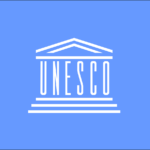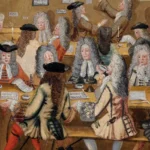How do we get to a future where open science is the norm? The US National Academies of Sciences, Engineering and Medicine recently commissioned a study (click on the above button) to look at this question and develop recommendations. Several OSIers were involved in the making of this document (as well as the Laura and John Arnold Foundation, which funded OSI in 2016). This report does a good job describing the intricacy, complexity, and overlap of open science issues and concerns, and is a wonderful resource for understanding and cataloging this information. There aren’t many resources that bring all this information together into one document, so in this sense alone this NAS report has given the research community a valuable resource that will help inform future debate on this issue.
As a policy document, however, this report falls well short, as expected. The devil is in the details and it’s in these details where all the consensus and implementation challenges reside. It’s one thing to say “we should”—quite another to say “we can.” Indeed, the scholarly communication community is so deeply divided on a wide range of issues regarding open that even agreeing on the scope of the challenge—even agreeing on the “we should” part of this recommendation—is difficult, let alone agreeing on the correct solutions.
For instance, the concept of “open science by design” is championed here (see p. 130 for details) but not really challenged. Is open science actually good for all science in all cases? Where is the evidence of this? What are the metrics? Where is the range of choices to be offered? What about the research in the humanities? What do researchers think? Beyond describing possible concerns about issues like secrecy and competition, we don’t really know. The sense one gets here is that this is a top-down idea—noble and well-intentioned as it may be—that will require researchers to cooperate with funder mandates, university directives, and publisher policies. It isn’t an approach that says researchers want open and are going to embrace open science on their own because it’s in the best interest of their research or their careers. It would be interesting to develop these same ideas from the researcher perspective instead. How can open help research succeed, and how can we get from here to there while paying astute attention along the way to what researchers want and need?
And because there is so much we don’t know in this debate, the recommendations put forward for how to implement “open science by design” are necessarily vague (from the summary on p. 11):
- Professional societies—individually and collectively—should work to transition from current publication strategies to new ones that foster open science by design.
- Journal editors should work with publishers to transition from current business models to new ones that foster open science by design.
- Research funders should explore innovative means to support the transition from subscription-based systems to new publication strategies that enable open science by design.
Each of these recommendations in itself includes a whole ecosystem of stakeholder groups and myriad conflicting concerns and perspectives. Societies, editors, and funders do not work together toward the same goals, nor do all societies work with each other toward the same open goals, or editors, or funders. Whether they all “should” really depends on the goals and points of common interest. And whether they “can” and how are whole other questions that are critical to answer from a policy perspective.
Also a policy critique, and not a critique on the important value of this document as an information resource, there is also a tendency in this report to more or less assume the economic and academic benefits of open. Dissenting views are mentioned but the default position seems to be that all open is uniformly positive (which is fine, rhetorically, but as a policy instrument falls short), and that publishers are persona non grata in the science ecosystem. Publisher profit margins are once again raised as an issue—which is a staple of anti-corporate open access rhetoric—and with regard to embargos (p. 115), we hear this: “Even short embargo periods mean that results are available only to paying subscribers, not to the public, nor to researchers outside a specialty field, nor to search engines, nor to companies, artificially inhibiting progress in an era when scientific progress is accelerating and can in principle be made available immediately.” The preferred approach here is to actually study these issues before making policy recommendations about them. There may well be merit in these concerns, but no one has actually studied these issues carefully enough to develop policy recommendations about them (which is why OSI has put embargos and profit margins on its study priority list).
Finally, critiquing the short and long-term recommendations from this study, it seems more insurgent than collaborative. We don’t hear about the need to work together—across stakeholder groups, regions, institutions and disciplines (indeed, humanities is largely excluded from this conversation)—to develop solutions that work for everyone everywhere, but we do hear about the need for funding to back APC solutions and for libraries to band together. Some recommendations overlap with OSI’s though, including the need for universal standards, better open infrastructure, better outreach regarding open, and reducing the influence of impact factors:
In conclusion, this NAS report is a valuable and important information resource on the issues and questions surrounding the future of open science. While the informational aspects of this report are solid, the policy recommendations fall short, but provide a good starting point for discussion. Funding more research to help fill in our understanding of this issue would be a good next step, followed by engaging the research community (or more realistically, one small community at a time) in developing an action plan that works for research.










